POSTGRADUATE ART FORUM
presented on 10 May 2013 at MFA WCA / Project Space
The Ideas, concerns and contexts that inform my current art practice
CHILDHOOD'S IDEAS:
There are two very early ideas from my childhood, I remember, with which, I think, began my conscious life, these are:
DEATH & LEVITATION
DEATH
as
Non-Being
I remember myself being a child of 7-8, when I suddenly realized that I was mortal. The idea of me dead and no more existing was a deep revelation and a profound shock. It made me despair because I could not imagine how it was not to be. I have been preoccupied with this ever since throughout my whole life, though I realize that all thinking about it is futile. And here I see not only my physical end but also my mental limitation. Of course, we can construct all sorts of concepts about the afterlife but all this remains only speculations.
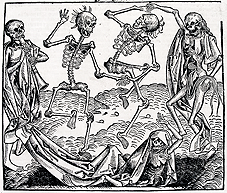
Michael Wolgemut (1493), The Dance of Death
The Man with a Scythe
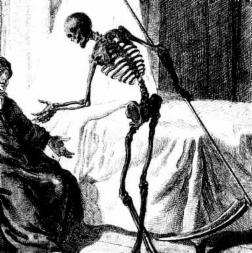

The Middle-Ages and a photographic depiction of a real man with a scythe
In English, Death is often given the name Grim Reaper and, from the 15th century onwards, came to be shown as a skeletal figure carrying a large scythe and clothed in a black cloak with a hood. It is also given the name of the Angel of Death (Malach HaMavet) or Devil of Death or the angel of dark and light stemming from the Bible and Talmudic lore. The Bible itself does not refer to "The Angel of Death"; there is, however, a reference to „Abaddon" (The Destroyer), an Angel who is known as the "The Angel of the Abyss". In Talmudic lore, he is characterized as archangel Samael. Wiki

DEATH IN MUSIC
Death for five voices (Carlo Gesualdo da Venosa) | Madrigali di Gesualdo
http://www.youtube.com/watch?v=4qU6dSnH9es
Corvus Corax - TOTENTANZ
http://www.youtube.com/watch?v=EWruBwPNBOs&feature=fvwp&NR=1
Schubert - "Death and the Maiden" Quartet in D Minor (4)
http://www.youtube.com/watch?v=rcH21ZmZeBU
DEAD CAN DANCE - Desert Song
http://www.youtube.com/watch?v=-LaJHuU-lqc
Catastrophe Noise - human death
http://www.youtube.com/watch?v=yHDyb8ZejGU
Controlled Bleeding-Voices Of The Dead 1988 (Death Ambient-Dark Ambient-Drone Industrial)
http://www.youtube.com/watch?feature=player_embedded&v=Dhn6UXrDN
LEVITATION
as
a form of transportation
In my childhood, I had a dream that occurred over and over again. It is the only dream from this time I still recollect. In this dream, I see myself walking on air doing giant steps but not touching the ground, seemingly defying the gravitation, moving very fast and seeing the world underneath. I remember enjoying this air walking very much, feeling very light and free. But then one day this dream stopped and I never had it again.
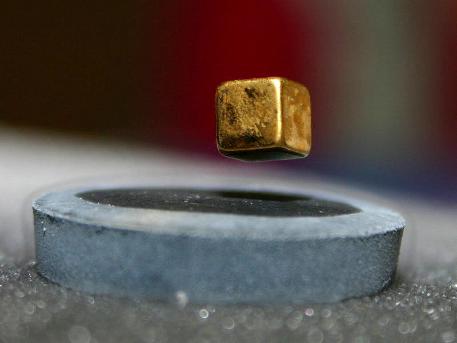
A cubical magnet levitating over a superconducting material (this is known as the Meissner effect)
This apparently resulted in my later interest in the following ideas:
THE BIRD’S EYE VIEW
The change of perception, seeing things from another or unfamiliar angle
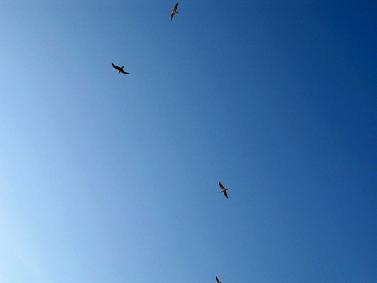
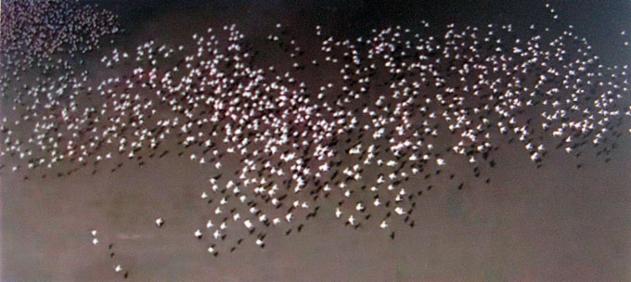
and
GRAVITATION
I am interested in these things because they show the passage of time and that all is finite.
Gravitation, or gravity, is the natural phenomenon by which physical bodies attract each other with a force proportional to their masses, and inversely proportional to the square of the distance between them.
Newton's law of universal gravitation
Philosophiæ Naturalis Principia Mathematica (1687)
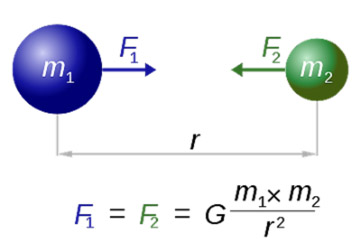
Newton's law of universal gravitation states that every point mass in the universe attracts every other point mass with a force that is directly proportional to the product of their masses and inversely proportional to the square of the distance between them. (G is the gravitational constant ≈ 6.67428(67)×10−11 m3/(kg·s2)).
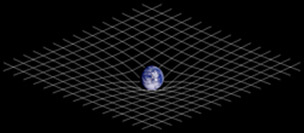 Albert
Einstein‘s 'General
Theory of Relativity'
Albert
Einstein‘s 'General
Theory of Relativity'
spacetime curvature - gravitation
Albert Einstein’s 'General Theory of Relativity' states that gravity wrinkles space-time and suggests that space-time is curved according to the energy and momentum of whatever matter and radiation are present.
The enormous gravitation is the cause of the Black Holes:
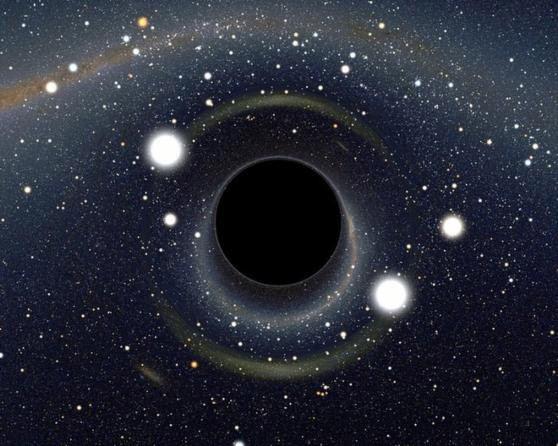
The Birth of a Black Hole. After energy in a star is consumed, it collapses under its own weight. The protons and electrons inside of it merge to neutrons and the density reaches unimaginable high value. A Black Hole is born, the gravitational pull of which is so large that not even a ray of light can escape.
Since I always have been interested to look into things in depth and mistrust subjective opinions, looking for the so-called “objective truth", so I studied (and graduated) in philosophy and theory of science.
And though I moved on from science to art since then and also graduated in Fine Art, I am still interested in scientific and philosophical ideas, such as the Chaos Theory and Entropy.
CHAOS THEORY
AND
ENTROPY
CHAOS –
Sensitivity to initial conditions is popularly known as the “butterfly effect”:
The flapping wing represents a small change in the initial condition of the system, which causes a chain of events leading to large-scale phenomena. Had the butterfly not flapped its wings, the trajectory of the system might have been vastly different.
ENTROPY –
As the second law of thermodynamics shows, in an isolated system (like our universe) internal portions at different temperatures will tend to adjust to a single uniform temperature and thus produce equilibrium. Thus, the fact that the entropy (uniformity) of the universe is steadily increasing, means that its total energy is becoming less useful: eventually, this will lead to the “heat death of the Universe“ (all energy is evenly distributed - energy loss).
Science can‘t explain a lot of things,
e.g. telepathy, paranormal phenomena and what was before the „Big Bang“...
This and my psychological / psychic disposition explain my interest in other than rational, scientific things, that is
OCCULT, MYSTICISM, ANTHROPOSOPHY, SPIRITUALISM, MAGIC, SHAMANISM, MADNESS, ART
As the opposite of the rational scientific thinking and an alternative quest for the truth
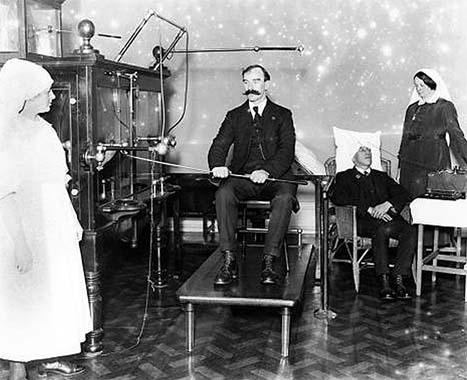
Another crucial event in my life was a conscious discovery of nature.
NATURE
&
MY UNIVERSE
Australian landscape / desert as a place of escape
Going to Australia some years ago, living there and, in particular, flying over different landscapes and seeing the awesome beauty underneath, as well as walking through the Australian outback was another great experience and a genuine inspiration (another way to access the Sublime and the Infinite).
Thus I developed in my mind the concept of Australian landscape / or desert as a place of escape, where one can meditate, experience spiritual things, be free or whatsoever.

Polly Gould
I like “the affirmation of cognitive rational identity in the face of awesome beauty” (I am citing Polly Gould, “A Scenic Death: Art, Death and Landscape”). However Polly Gould defines it gender specifically as a male reaction to the sublime landscape, which for me sounds rather very old-fashioned.
NATURAL
AND
MAN-MADE CATASTROPHES
Natural and man-made catastrophes, the precarious relationship between nature and culture, fragility, transience and instability of our world and our human existence, and the apocalyptic landscape are themes that interest me.
I am interested in the aspect of the physical and human worlds where things break down, collapse and fall apart, because these are the most powerful moments that demonstrate the mortality and finality of all things and that nothing is eternal.
Japan Tsunami 2011
nature
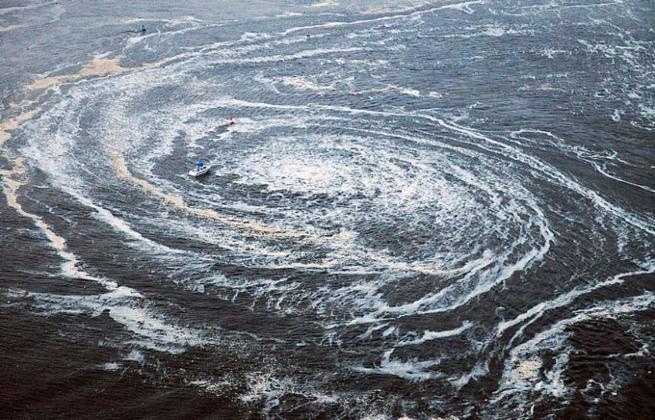
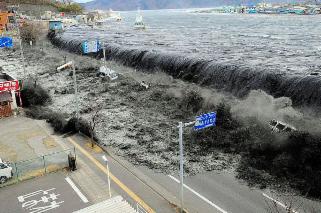
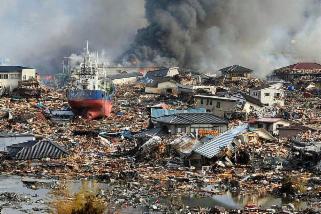
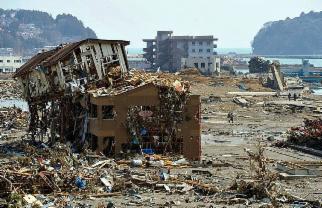
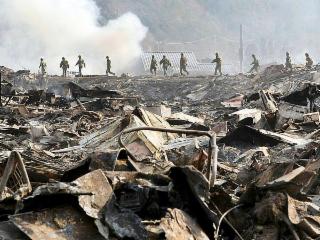
Chernobyl
man-made





Przewalski horses, extinct in the wild, are found in just a few nature reserves, including the Chernobyl exclusion zone.
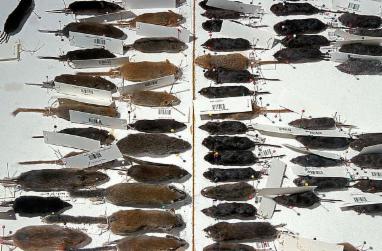 The mice, as well as other small rodents like voles, appear to be thriving. There were found large numbers of mutation rates in otherwise healthy voles in Chernobyl
The mice, as well as other small rodents like voles, appear to be thriving. There were found large numbers of mutation rates in otherwise healthy voles in Chernobyl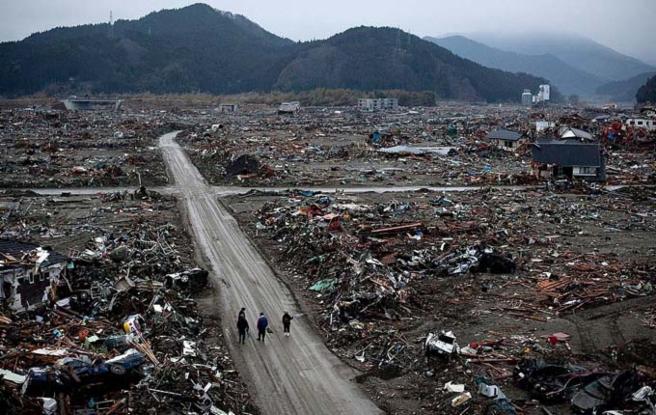
link to my work
MY WORK
From chaos to coherence; freedom, identity, authenticity
In my art, I seek freedom, identity and authenticity.
I follow my intuition and instincts.
I am active and go along with the work and processes.
And I am conscious of finality.
My painting practice utilizes the law of gravitation, shifting and tilting the paint while it is still wet.
To paraphrase Alexis Harding (who likewise utilizes the law of gravity in his work):
“Pictorialism in my work is an unpredicted residue of the techniques and materials I use to make it. I manipulate and simulate physical processes, alongside with the options offered me by painting and sculpture, through my intuition and subjective decision making - to see an entropic image of a desolated landscape results at the end.”
My installations and sculptures are concerned with the precarious relationship between nature and culture. They mainly utilize building materials, such as bricks or their surrogates, alongside with residue of previous works and debris. The bricks are taken out of their cultural context, as one of the main and historically oldest building materials, and put in the contest where they mean instability and danger. With this displacement, I aim to highlight the unpredictability and insecurity of human existence. What seems safe now could be destroyed any moment.
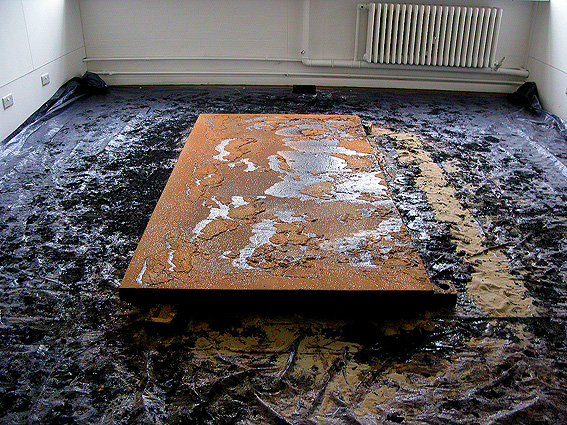
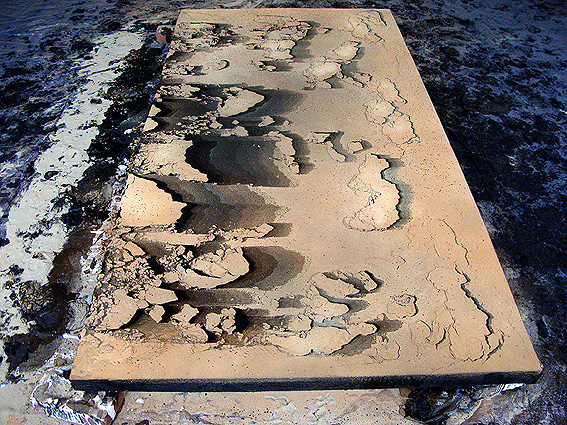

detail
This links to other, more specific ideas around my art, such as
INSTABILITY, AMBIGUITY, OPTICAL ILLUSION
AMBIGUITY
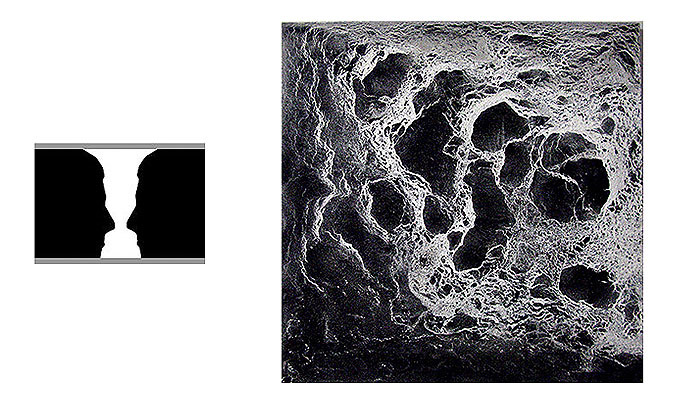
This illusion generally presents the viewer with a mental choice of two interpretations, each of which is valid. Often, the viewer sees only one of them, and only realizes the second, valid, interpretation after some time or prompting. However, no matter how the viewer would try, they simply cannot encompass both interpretations simultaneously - one occludes the other.
INSTABILITY
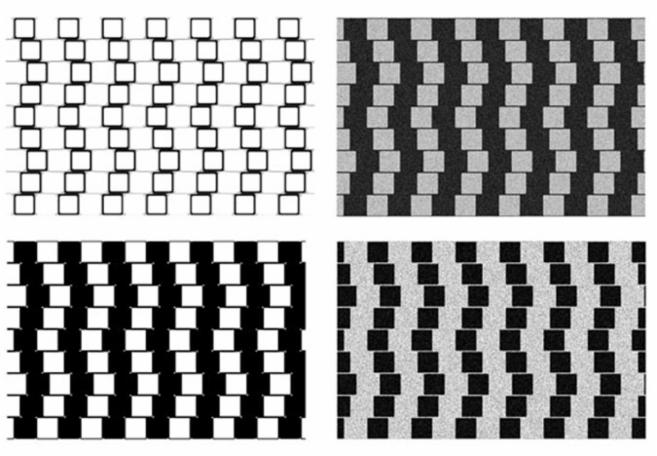
Derived from the so-called ‘Café Wall’ Illusion. This is one of the principles I normally apply in the construction of my sculptures made from bricks placing them one on top of another.
DECONSTRUCTION, FRAGMENTATION, SIMULACRA, SIMULATION,
French Philosophers & Science
I see the critical context for my work in Jack Derrida’s ideas of Deconstruction and Fragmentation - my interest in the transforming ideas of a structure’s surface, distortion, shifting, dislocation as well as unpredictability and controlled chaos; also important is the ‘Simulacra Concept’ by Jean Baudrillard – since I imitate natural processes, surfaces and materials in my work.
Jacques Derrida (1930 – 2004), a French philosopher. He developed a form of semiotic analysis known as Deconstruction. His work was labelled as post-structuralism and associated with post-modern philosophy. His theories became crucial in debates around ontology, epistemology (especially concerning social sciences), ethics, aesthetics, hermeneutics, and the philosophy of language. Jacques Derrida's work also influenced architecture (in the form of deconstructivism), music, art and art critics.
Deconstructivism is a development of post-modern architecture that began in the late 1980s. It is characterized by ideas of fragmentation, an interest in manipulating ideas of a structure's surface or skin, non-rectilinear shapes which serve to distort and dislocate some of the elements of architecture, such as structure and envelope. The finished visual appearance of buildings that exhibit the many deconstructivist "styles" is characterized by a stimulating unpredictability and a controlled chaos.
Simulacra and Simulation is a 1981 philosophical treatise by Jean Baudrilllard seeking to interrogate the relationship among reality, symbols, and society.
Simulacras are copies that depict things that either had no reality to begin with, or that no longer have an original. Simulation is the imitation of the operation of a real-world process or system over time.
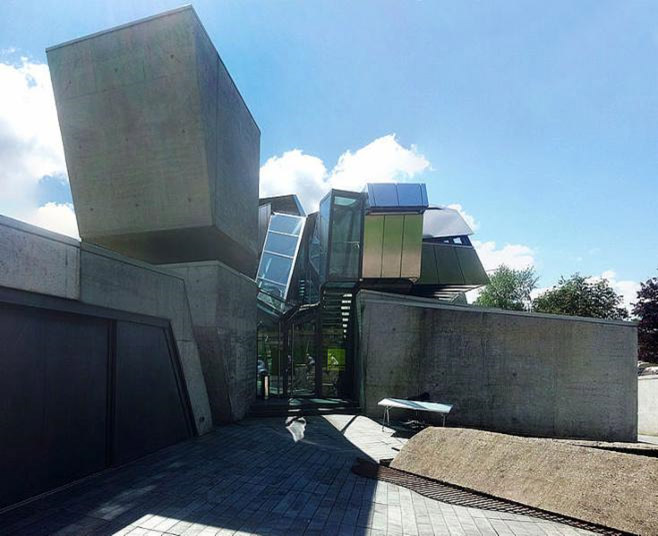
DISLOCATION
In materials science, a dislocation is a crystallographic defect, or irregularity, within a crystal structure. The presence of dislocations strongly influences many of the properties of materials. There are two primary types: edge dislocations and screw dislocations. Dislocations found in real materials typically are mixed, meaning that they have characteristics of both.
“It is a common flaw in crystal structures. In a screw dislocation, a slip or misalignment in the normal sequence of molecular deposition perpetuates itself throughout the crystal by causing a pattern of growth that spirals around the initial dislocation that produces a helical structure" (Charles Bunn "Crystals: Their role in Nature and in Science").
Robert Smithson speaks about the "crystalline structure of times" as an universal principle in the building of matter.
Some of my sculptural work utilizes the simplified principle of the so-called "edge dislocation" (not to confuse with the “screw dislocation” first applied by Robert Smithson in his installations, e.g. the "Spiral Jetty"). In my work, the "edge dislocation" is expressed by placing the ‘bricks’ or blocks ("the growth") on the edge of the previous ones in the row.
SCREW DISLOCATION IN ART
 Robert Smithson, Spiral Jetty Rozel Point, Great Salt Lake, Utah, April 1970, mud, precipitated salt crystals, rocks, water coil 460 m long and 46 m wide
Robert Smithson, Spiral Jetty Rozel Point, Great Salt Lake, Utah, April 1970, mud, precipitated salt crystals, rocks, water coil 460 m long and 46 m wideEDGE DISLOCATION IN ART
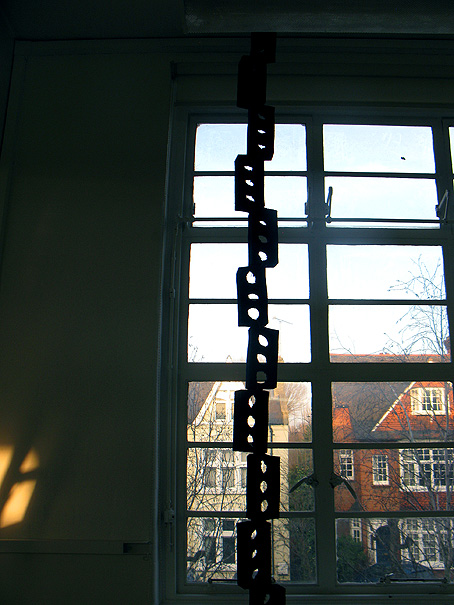
Other important ideas:
POETRY I HAIKU
Haiku helps to focus my thoughts and emotions, and concentrate myself on the essence of the vision during the creative process.
Haiku is a very short form of Japanese poetry typically characterized by three lines. (The essence of haiku is 'cutting' - this is often represented by juxtaposition of two images or ideas and a 'cutting' word or 'cutting' phrase between them.) Normally, haiku is about landscape experience in connection with a deep emotional or cognitive insight.
from my window:
snow covered the old graves -
nothing remains
this form dissolves -
there is nothing
i can see
SOUND
Experimental, ambient and natural sound; silence
I am interested in experimental, natural and ambient, random sound, and in artists who work with natural sound such as Andy Garbi, Danyel Schnyder, Scott Smallwood, Nikola Basic, Nick Penny, Jonathan Brind, Jem Finer ("A Score for a Hole in the Ground") and Luke Jerram. This is relevant with regard to my long-termed project, the sculpture-installation “The Monument to Desert and Sea, and Lost Generation” that also aims to be a music instrument - a sort of an Aeolian harp - with wind and waves generating natural music.
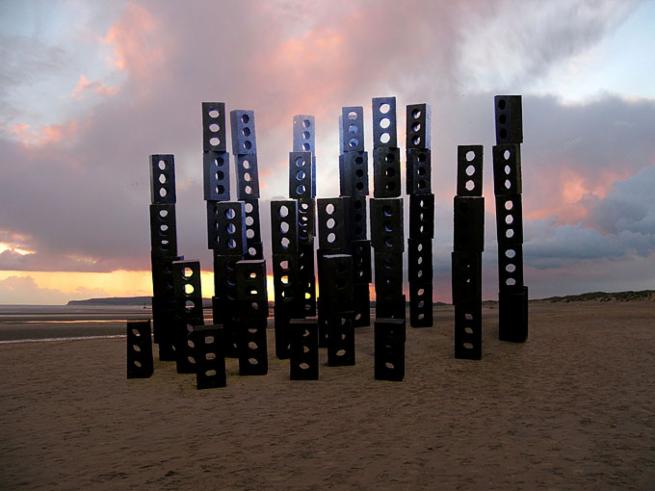
Monument to Desert and Sea, and Lost Generation (model), with bricks approx. 215 x 100 x 65cm each
Bibliography:
Polly Gould (2009) A Scenic Death: Art, Death and Landscape
Jeffrey Kastner, ed. (2012) Nature, Whitechapel Gallery, The MIT Press
Jean Baudrillard (1981) Simulacra and Simulation, Ed. Galilée
Jean Baudrillard (1996) The Perfect Crime, Ed. Verso
Jacques Derrida (1981) Dissemination, trans. Barbara Johnson, Chicago Uni. Press
Jacques Derrida (1082) Margins of Philosophy, trans. Alan Bass, Chicago Uni. Press
Albert Einstein (1916) The General Theory of Relativity
Colin Wilson (2203) Occult, Watkins Publishing
Haiku:
Matsuo, Bashō (1966) The Narrow Road to the Deep North and Other Travel Sketches. trans. Nobuyuki Yuasa
Music / Sound:
Carlo Gesualso da Venosa - Death for five voices | Madrigali di Gesualdo
Corvus Corax - TOTENTANZ
Schubert - "Death and the Maiden", Quartet in D Minor (4)
Dead Can Dance - Desert Song
Catastrophe Noise - human death
Controlled Bleeding - Voices Of The Dead 1988 (Death Ambient-Dark Ambient-Drone Industrial)
Luke Jerram, Wind-Activated Sound Sculpture
Jem Finer, A Score for a Hole in the Ground
Luke Jerram, Wind-Activated Sound Sculpture
http://www.treehugger.com/culture/aeolus-wind-activated-sound-sculpture-luke-jerram.html
http://www.youtube.com/watch?feature=player_embedded&v=U-KYJ4mFJSM
http://www.oddmusic.com/gallery/om24550.html
http://www.oddmusic.com/clips/sea_organ.mp3 http://www.youtube.com/watch?v=6vEUy8wZJmM http://www.youtube.com